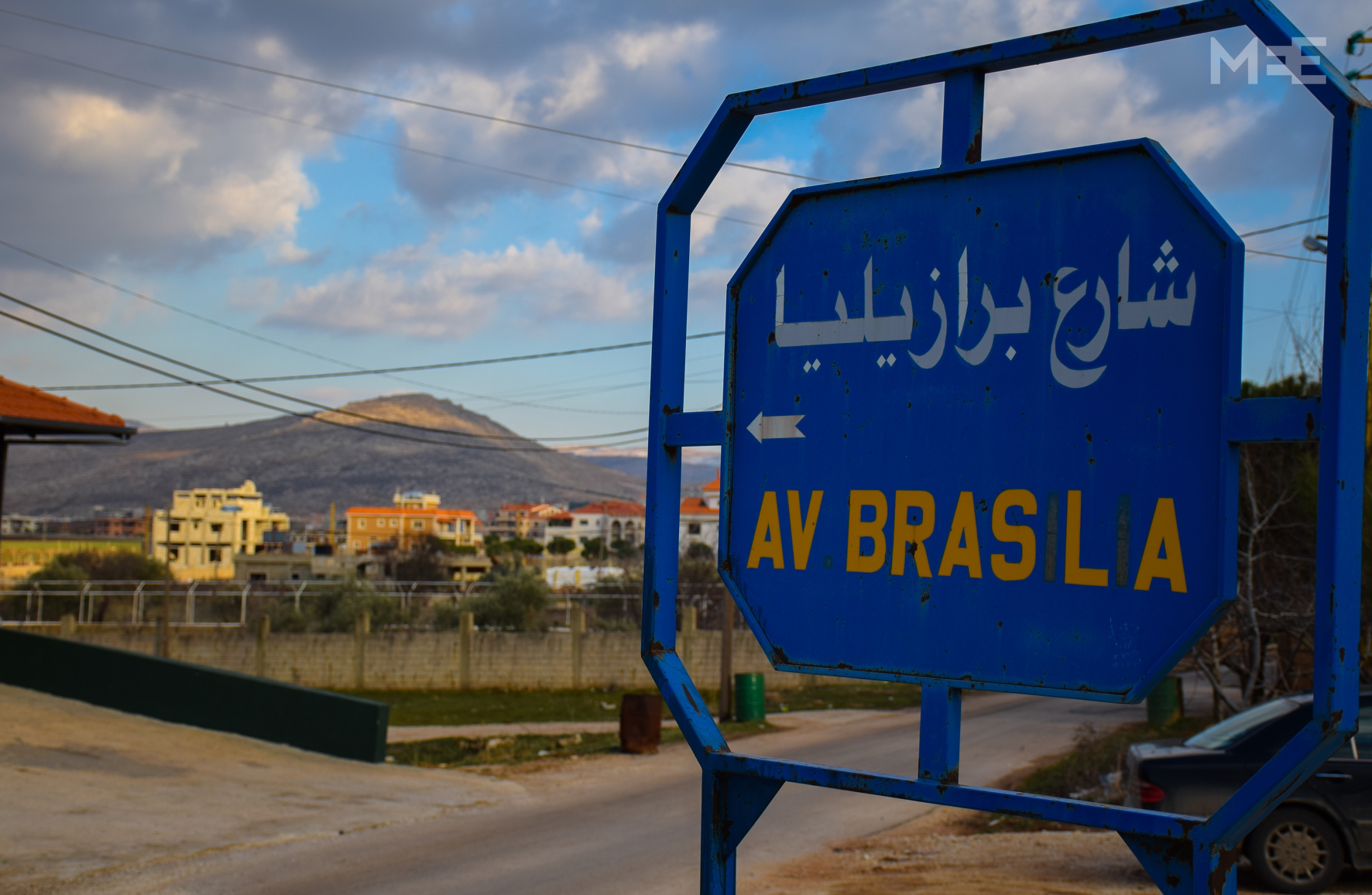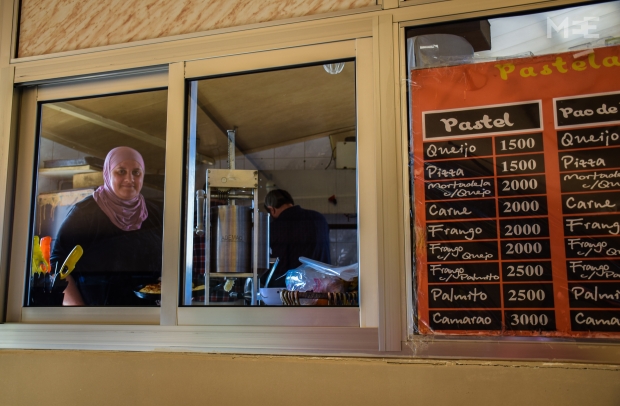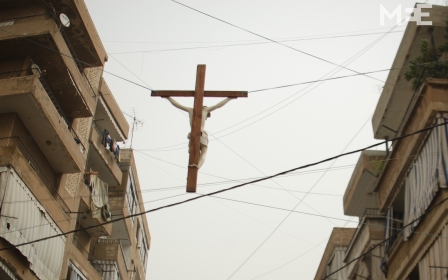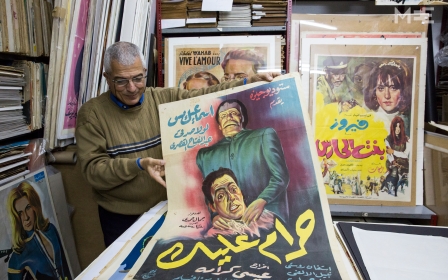A street in Lebanon that is always Brazil

Avenida Brasilia is a long road cutting through the Lebanese village of Kamed al-Lauz. On the street signs, Arabic letters attempt to recapture the musicality of Portuguese.
Kamed al-Lauz is not a Latin American town, but is instead populated by Sunni Muslims in the heart of Lebanon’s Bekaa valley, a conservative region bordering Syria.
Its inhabitants, like many others in the neighbouring villages, burst into wide smiles when addressed in Portuguese. “Sure, I speak Portuguese,” they reply. “Who doesn’t?”
The area can best be described as a Brazilian enclave, the point where the geographical and cultural distance between the Arab world and Latin America is razed.
In some villages – such as Sultan Yaacoub, Ghazze and Kamed el Lauz – 90 percent of the population is composed of “Brazilebanese,” a neologism that refers to bi-national Brazilian-Lebanese citizens in Lebanon.
Such an improbable brew is the product of decades of migratory waves, the first of which was led by the Lebanese Christian community fleeing Ottoman rule in the late 19th Century.
The popular story among the Brazilian-Lebanese community sees Brazil’s last emperor, Dom Pedro II, as a founding father for the first generation of the diaspora. Speaking fluent Arabic, he is said to have invited the beleaguered Lebanese Christian community to seek fortune in Latin America.
A less romanticised explanation sees the more lush climes of Latin America as a powerful push-factor for the battered Bekaa farmers, stifled by the Lebanese feudal economy.
Following the Second World War, a new predominantly Muslim wave of emigration left Lebanon in the hope of a better life. In the decades that followed, the conflicts that ravaged the country – the 15-year-long civil war that began in 1975 and the shorter but brutal war with Israel in 2006 – pumped new blood into the growing Brazilian-Lebanese community.
Today, more than seven million Brazilians can trace their origins back to Lebanon – a striking figure for a country with just over four million citizens.
The charming blend of Middle Eastern and Latin American culture is embodied in the person of Christina al-Hindi Jaroush. During her interview with Middle East Eye, she prepared some of Brazil’s most popular dishes.
“When I came back to Lebanon, I started doing what I knew best,” said Jaroush as she dropped yet another puff pastry into a pan of boiling oil. She opened the pastelleria (bakery) in 2013, after six years living in Sao Paolo, where one of her daughters married a Brazilian-Lebanese man.
“I decided to come back because life for women there is very restrictive,” says Jaroush. “In Brazil, most women do not work and they rarely go out. Here, I work and I can have more social interactions with my neighbours.”
Albeit happy to restart her life in her country of origin, Brazilian culture is something that she holds very dear.
“Men take more pride in speaking Arabic, but when I meet up with my female friends we automatically switch to Portuguese,” she says. “We have a deep love for the country and its culture.”
Like her, many of those who emigrated to Brazil have a strong desire to keep this tie alive. The Brazil-Lebanon Cultural Centre, or Brasiliban in short, opened its doors in Beirut in 2011 to help keep this connection alive. Nestled in a historical house, the centre provides a variety of language courses and activities that match a longstanding demand among the Lebanese.
“We want to promote the Brazilian language and culture,” says director Najwa Kamel Bazzi, “but also provide a place where we can provide relief to the many people who miss the country.”
Herself a Brazilian of Lebanese origin - her father moved to Brazil in his 20s while her mother was an immigrant of the second generation – Bazzi has always been proud of her origins.
“We are generally looked at with respect because we are resourceful, well-educated and fluent in many languages,” says Bazzi.
Lebanese immigrants – originally known in Brazil as “Turkish” - started off as peddlers but soon became known for their trading skills. In 2015, eight percent of parliament seats in Brazil were occupied by descendants of Lebanese immigrants.
'Back' to Lebanon
Wherever they are, those Lebanese who have left their home country - estimated to be around 15 to 20 million - typically remain in touch with their kin. Many of them chose to return to the fatherland or to raise their children in Lebanon.
Luzia Watanabe, a Brazilian of Japanese origin, never thought she would move to the Bekaa Valley until she married a Lebanese in Sao Paolo. When their two daughters started school, Watanabe and the girls moved back to Lebanon while her husband remained in Brazil to work as an urban planner.
“The quality of education here is much better than in Brazil, especially given that children grow up being fluent in three languages,” said Watanabe, referring to Arabic, French and English – the languages commonly used in the Lebanese education system. Her daughters – aged eight and 10 – display a mix of Lebanese and Japanese features while communicating in fluent Portuguese.
Despite being Japanese, Watanabe feels fully Brazilian. The first Japanese immigrants arrived in Brazil in 1908, which then became home to the largest Japanese population outside the homeland. Unlike the Lebanese, Japanese immigrants were regarded as undesirable and underwent "whitening" and assimilationist policies by the Brazilian government.
In Lebanon, Watanabe feels welcomed among the “Brazilebanese”.
“Even though I do not speak Arabic fluently, here there are many other women who speak Portuguese,” says Watanabe, who now considers herself to be also partly Lebanese.
During her 10 years in Lebanon she has been introduced to the principles of Islam and has become a Muslim. “If you get to know the true spirit of this religion, you will end up loving it,” she told MEE.
Bi-national Brazilian-Lebanese citizens in Lebanon are estimated to number around 10,000, a figure that does not take into account those who returned without having obtained Brazilian nationality.
In Kamed al-Lauz alone, around 400 Lebanese come back every summer to spend the holidays in their hometowns, according to estimates by the local municipality. As for Watanabe, she awaits the summer to join her husband in Brazil.
“I love Lebanon,” she says, “but the saudade (longing) for one’s homeland never abandons you.”
This article is available in French on Middle East Eye French edition.
New MEE newsletter: Jerusalem Dispatch
Sign up to get the latest insights and analysis on Israel-Palestine, alongside Turkey Unpacked and other MEE newsletters
Middle East Eye delivers independent and unrivalled coverage and analysis of the Middle East, North Africa and beyond. To learn more about republishing this content and the associated fees, please fill out this form. More about MEE can be found here.






